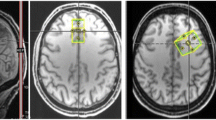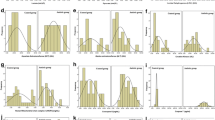Abstract
Autism spectrum disorder (ASD) represents a very large set of neurodevelopmental issues with diverse clinical outcomes. Various hypotheses have been put forth for the etiology of autism spectrum disorder, including issues pertaining to oxidative stress. In this study, we conducted measurements of serum 8-Iso-Prostaglanding F2 α (8-iso-PGF2α, which is the results of non-enzimatically mediated polyunsaturated fatty acid oxidation) in a population of individuals with autism and a control group of age and sex matched controls. A quantitative assay of Paraoxonase 1 (PON1) was conducted. Data regarding comorbidities, structural MRI scans, medication, intelligence quotient (IQ) and Childhood Autism Rating Scale scores (CARS) were also included in our study. Our results show that patients diagnosed with autism have higher levels of 8-iso-PGF2α than their neurotypical counterparts. Levels of this particular metabolite, however, do not correlate with quantitative serum levels of Paraoxonase 1, which has been shown to be altered in individuals with autism. Neither 8-iso-PGF2α nor quantitative levels of PON1 provide any meaningful correlation with clinical or neuroimaging data in this study group. Future research should focus on providing data regarding PON 1 phenotype, in addition to standard quantitative measurements, in relation to 8-iso-PGF2α as well as other clinical and structural brain findings.

Similar content being viewed by others
References
Abrahams BS, Geschwind DH (2008) Advances in autism genetics: on the threshold of a new neurobiology. Nat Rev Genet 9:341–355
Autism Spectrum Disorder, 299.00 (F84.0) (2013) In Diagnostic and statistical manual of mental disorders: DSM-5. (5th ed.). American Psychiatric Association, Washington, D.C.
Bhattacharyya T et al (2008) Relationship of paraoxonase 1 (PON1) gene polymorphisms and functional activity with systemic oxidative stress and cardiovascular risk. JAMA 299(11):1265–1276
Charman T, Taylor E, Drew A et al (2005) Outcome at 7 years of children diagnosed with autism at age 2: predictive validity of assessments conducted at 2 and 3 years of age and pattern of symptom change over time. J Child Psychol Psychiatry 46:500–513
Chauhan A, Chauhan V (2006) Oxidative stress in autism. Pathophysiology 13(3):171–181
Chauhan A, Tapan A, Chauhan V (2012) Brain region-specific glutathione redox imbalance in autism. Neurochem Res 37(8):1681–1689
Costa LG et al (2013) Modulation of paraoxonase 2 (PON2) in mouse brain by the polyphenol quercetin: a mechanism of neuroprotection? Neurochem Res 38(9):1809–1818
Damodaran LPM, Arumugam G (2011) Urinary oxidative stress markers in children with autism. Redox Rep 16(5):210–222
Draganov DI et al (2005) Human paraoxonases (PON1, PON2, and PON3) are lactonases with overlapping and distinct substrate specificities. J Lipid Res 46(6):1239–1247
Frustaci A, Neri M, Cesario A, Adams JB, Domenici E et al (2012) Oxidative stress-related biomarkers in autism: systematic review and meta-analyses. Free Radic Biol Med 52:2128–2141
Geschwind DH, Levitt P (2007) Autism spectrum disorders: developmental disconnection syndromes. Curr Opin Neurobiol 17:103–111
Ghezzo A et al (2013) Oxidative stress and erythrocyte membrane alterations in children with autism: correlation with clinical features. PLoS One 8(6):e66418. doi:10.1371/journal.pone.0066418
Goldani AS, Downs SR, Widjaja F, Lawton B, Hendren RL (2014) Biomarkers in autism. Frontiers Psychatry 5(100):1–13. doi:10.3389/fpsyt.2014.00100
Happe F, Ronald A, Plomin R (2006) Time to give up on a single explanation for autism. Nat Neurosci 9:1218–1220
Hosmer J, David W (2004) Lemeshow S. John Wiley & Sons, Applied logistic regression
Howlin P, Goode S, Hutton J et al (2004) Adult outcome for children with autism. J Child Psychol Psychiatry 45:212–229
Humbert R et al (1993) The molecular basis of the human serum paraoxonase activity polymorphism. Nat Genet 3(1):73–76
James SJ et al (2006) Metabolic endophenotype and related genotypes are associated with oxidative stress in children with autism. Am J Med Genet B Neuropsychiatr Genet 141:947–956
Jarvik GP et al (2000) Paraoxonase (PON1) phenotype is a better predictor of vascular disease than is PON1192 or PON155 genotype. Arterioscler Thromb Vasc Biol 20(11):2441–2447
Johnson CP, Myers SM (2007) Identification and evaluation of children with autism spectrum disorders. Pediatrics 20(5):1183–1215
Khersonsky O, Tawfik D (2005) Structure-reactivity studies of serum paraoxonase PON1 suggest that its native activity is lactonase. Biochemistry 44(16):6371–6382
Li H, Liu D, Liang C. (2003) Paraoxonase gene polymorphisms, oxidative stress, and diseases. Journal of molecular medicine81.12: 766–779
Loth E, Murphy DG, Spooren W. Defining Precision Medicine Approaches to Autism Spectrum Disorders: Concepts and Challenges. Frontiers in Psychiatry, 7 (2016)
Magyar CI, Pandolfi V (2007) Factor structure evaluation of the childhood autism rating scale. J Autism Dev Disord 37:1787–1794
Meguid NA, Dardir AA, Abdel-Raouf ER, Hashish A (2011) Evaluation of oxidative stress in autism: defective antioxidant enzymes and increased lipid peroxidation. Biol Trace Elem Res 143:58–65
Ming X et al (2005) Increased excretion of a lipid peroxidation biomarker in autism. Prostaglandins Leukot Essent Fat Acids 73(5):379–384
Morrow JD, Roberts LJ (1996) The isoprostanes: current knowledge and directions for future research. Biochem Pharmacol 51(1):1–9
Morrow JD, Harris TM, Roberts LJ (1990) Noncyclooxygenase oxidative formation of a series of novel prostaglandins: analytical ramification for measurement of eicosanoids. Anal Biochem 184:1–10
Newschaffer CJ, Croen LA, Daniels J, Giarelli E, Grether JK, Levy SE et al (2007) The epidemiology of autism spectrum disorders. Annu Rev Public Health 28:235–258
Ng CJ et al (2001) Paraoxonase-2 is a ubiquitously expressed protein with antioxidant properties and is capable of preventing cell-mediated oxidative modification of low density lipoprotein. J Biol Chem 276(48):44444–44449
Paşca SP et al (2006) High levels of homocysteine and low serum paraoxonase 1 arylesterase activity in children with autism. Life Sci 78(19):2244–2248
Pecorelli A, Leoncini S, De Felice C, Signorini C, Cerrone C et al (2012) Nonprotein-bound iron and 4- hydroxynonenal protein adducts in classic autism. Brain Dev 35(2):146–154
Qasem H, Al-Ayadhi L, Al-Ansary A (2016) Cysteinyl leukotriene correlated with 8-isoprostane levels as predictive biomarkers for sensory dysfunction in autism. Lipids Health Dis 15(130):1–10
Robel L (2009) Clinical features in autism. Arch Pediatr 16(11):1507–1512
Rommelse N et al (2015) Intelligence may moderate the cognitive profile of patients with ASD. PLoS One 10(10):e0138698. doi:10.1371/journal.pone.0138698
Rossignol DA, Frye RE (2012) A review of research trends in physiological abnormalities in autism spectrum disorders: immune dysregulation, inflammation, oxidative stress, mitochondrial dysfunction and environmental toxicant exposures. Mol Psychiatry 17:389–401
Schopler E, Reichler RJ, DeVellis RF, Daly K (1980) Toward objective classification of childhood autism: childhood autism rating scale (CARS). J Autism Dev Disord 10:91–103
Signorini C et al (2013) Isoprostanes and 4-hydroxy-2-nonenal: markers or mediators of disease? Focus on Rett syndrome as a model of autism spectrum disorder. Oxidative Med Cell Longev
Author information
Authors and Affiliations
Corresponding author
Rights and permissions
About this article
Cite this article
Pop, B., Niculae, AȘ., Pop, T.L. et al. Individuals with autism have higher 8-Iso-PGF2α levels than controls, but no correlation with quantitative assay of Paraoxonase 1 serum levels. Metab Brain Dis 32, 1943–1950 (2017). https://doi.org/10.1007/s11011-017-0083-4
Received:
Accepted:
Published:
Issue Date:
DOI: https://doi.org/10.1007/s11011-017-0083-4




